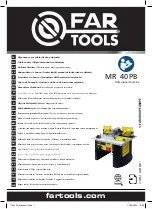
Reference Manual for the Model HR314 802.11a Hi-Speed Wireless Router
B-10
Network and Routing Basics
When a PC accesses a resource by its descriptive name, it first contacts a DNS server to obtain the
IP address of the resource. The PC sends the desired message using the IP address. Many large
organizations, such as ISPs, maintain their own DNS servers and allow their customers to use the
servers to look up addresses.
IP Configuration by DHCP
When an IP-based local area network is installed, each PC must be configured with an IP address.
If the PCs need to access the Internet, they should also be configured with a gateway address and
one or more DNS server addresses. As an alternative to manual configuration, there is a method by
which each PC on the network can automatically obtain this configuration information. A device
on the network may act as a Dynamic Host Configuration Protocol (DHCP) server. The DHCP
server stores a list or pool of IP addresses, along with other information (such as gateway and DNS
addresses) that it may assign to the other devices on the network. The HR314 has the capacity to
act as a DHCP server.
The HR314 also functions as a DHCP client when connecting to the ISP. The router can
automatically obtain an IP address, subnet mask, DNS server addresses, and a gateway address if
the ISP provides this information by DHCP.
Wireless Networking
The Model HR314 802.11a Hi-Speed Wireless Router conforms to the Institute of Electrical and
Electronics Engineers (IEEE) 802.11a standard for wireless LANs (WLANs). On an 802.11a
wireless link, data is encoded using direct-sequence spread-spectrum (DSSS) technology and is
transmitted in the unlicensed radio spectrum at 5GHz. The maximum data rate for the wireless link
is 72 Mbps, but it will automatically back down to 6 Mbps when the radio signal is weak or when
interference is detected.
The 802.11a standard is also called Wireless Ethernet or Wi-Fi5 by the Wireless Ethernet
Compatibility Alliance (WECA, see http://www.wi-fi.net), an industry standard group promoting
interoperability among 802.11 devices.
Wireless Network Configuration
The 802.11a standard offers two methods for configuring a wireless network - ad hoc and
infrastructure.














































